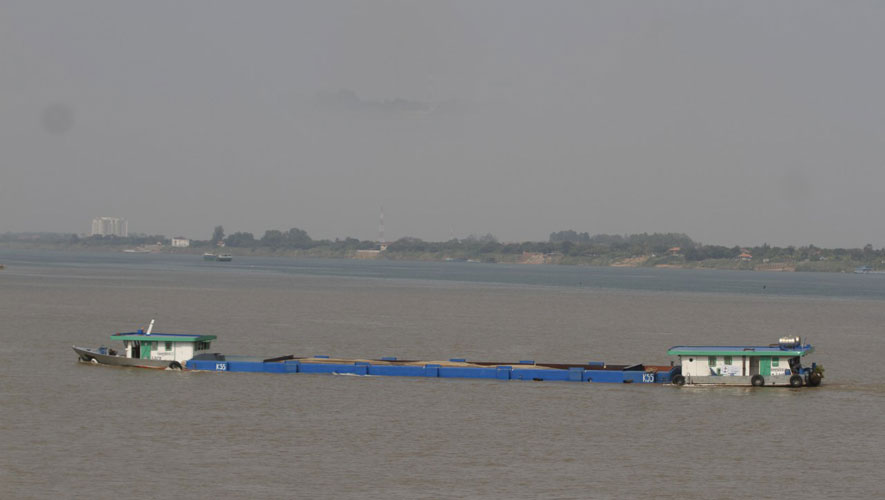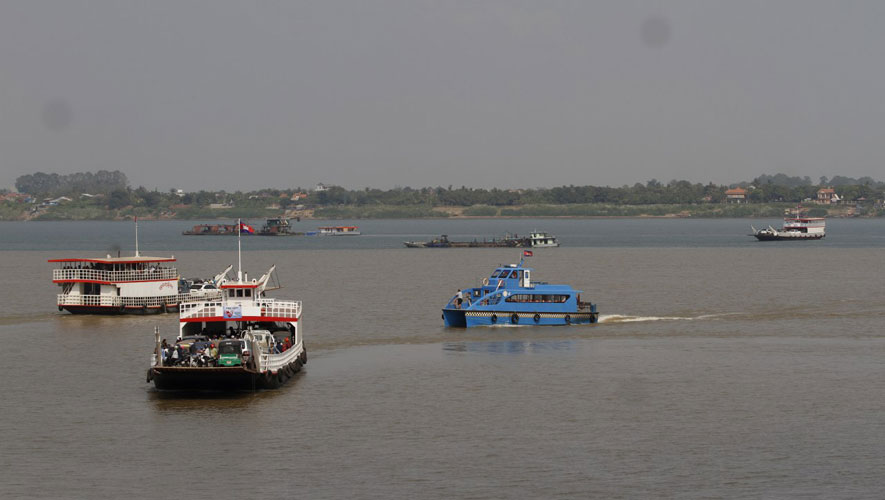Cambodia is a nation blessed with many networks of rivers and canals that can support inland waterway transport. However, until now this potential has remained undeveloped and untapped in comparison to Vietnam and China.
For the latest Cambodian Business news, visit Khmer Times Business
At present, the Asian Development Bank states that inland waterway transport is a low-cost, environmentally friendly way of transporting people and goods but many countries in the Asia Pacific are yet to realise its full potential.
For example, the World Bank states that Vietnam’s inland water transport industry performs a key role in the country’s transport system. With nearly a fifth of the total domestic goods trafficked via inland shipping.
Social value
Based on a research study on the sustainable development of inland waterway transport in Vietnam by the World Bank, this proportion is very high by international standards. In the three global regions where the industry is most prevalent, China, the United States, and the European Union, this method of transport only accounts for between 5-7 percent of the total domestic goods transported.
The World Bank also says the importance of this industry extends beyond its contribution to just the transportation of goods because of its wider economic, environmental, and social value.
It also results in a lower direct cost to users, delivering each tonne of goods at a lower cost compared to traditional road transport.
Fewer new roads needed
This is possible because traffic carried via waterways mean that less new road capacity is required, a costly process to build and maintain. Further resulting in the reduced social costs of road traffic accidents and road congestion. Inland waterway transport also saves greenhouse gas emissions because road transport emits two to three times the levels of emissions per tonne of kilometre moved.
In Vietnam many communities depend highly on ferries that use rivers and canals to carry residents to local markets, workplaces, health facilities, schools, and other social agencies.
With the industry containing very large numbers of individual owner-operators, often families living on their small barges.

The cost for land transport and inland waterway transport is poles apart, says Kan Kunthy, vice president of Amru Rice, a leading rice exporter in Cambodia. He says that mostly Vietnam and China are making use of their transportation on the river because it is more efficient and the logistical costs are very low.
Kan says that Vietnam charges only $2 to $3 per tonnes on the waterway. However, if we use land transport in Cambodia, it will cost $15 per tonnes to move rice from Battambang province to Phnom Penh. He added that we have discussed with the government for many years, but there have been no solutions until today.
“We have to have the investment in the ports along the Tonle Sap River or the Mekong River in Phnom Penh, the road access to the port also needs investment and we have to ensure river rehabilitation, so the investment is big. If these issues are sorted out, it would help us a lot in terms of transportation cost,” Kan adds. “It has the potential but it needs investment with a large amount of money,” he says.
More efficient
China and Vietnam have both implemented the Public-Private Partnership agreement for their inland waterways, Kan adds. The idea is like when we build an expressway or highway, it means that private companies are the operators and builders.
Railway in Cambodia, Kan adds does not perform well. The cost of using the railway is even higher than our land transport. “I think the government is not working well on this matter. Our railroad is so bad, sometimes the engines do not work and can crash even when only running at 18 kilometres per hour,” Kan adds
Cannot rely solely on trains
.
“I use a truck from Battambang province to Phnom Penh, and use the train from Phnom Penh to Sihanoukville. I use the train from Monday to Thursday as shipments mostly leave on Sunday. We cannot load the rice on the weekend via the train to the port because we cannot rely solely on the train. This is because sometimes the trains crash, or stop somewhere, they do not solve the issue and we have to pay the compensation and we miss the shipment,” Kan points out.
“Now, if we talk about the rice processing sector, the big things are the logistics, transportation and energy cost,” he adds. “We have a high electricity tariff, but still no stable and reliable electricity to use. The electricity is not only for rice but for the other sectors too. If we improve the logistics, energy costs and financing costs, the other sectors will be competitive,” Kan adds.
Khy Kosal, Secretary-General of the Ministry of Agriculture, Forestry and Fisheries says that transportation is one key challenge for Cambodia’s agriculture competitiveness. He says that Cambodia mostly relies on land transportation, whilst Vietnam relies on its inland waterways.
He adds that the government should think of what possibility there is on the investment of crop and other products in the handling areas along the rivers and the canals to ensure that transportation is at its lowest cost to farmers.
“If transportation via the river is for rice, for example, I think we can benefit a lot. The attraction of the investment is processing in the Special Economic Zone, as electricity is the main challenge. But we are working on this,” Mr Kosal adds.
Mak Sideth, Director General of the General Department of Waterway-Maritime Transport and Ports said that the government is seeking the budget to study inland waterway transport. “Once we complete our study we will come up with the plan to implement it,” he adds. “Currently, we do not have one,” Mr Sideth said, adding that it will be important for the private sector to be involved too.
Reducing cost
“If the study on inland waterway transport can be implemented and can transport goods via the river, it could reduce the cost, overweight issues and traffic accidents which all can contribute to the economy. However, we have not done the study nor budgeted for it yet,” Sideth adds.
Sideth adds that Vietnam has the budget, and there is support from their government, but Cambodian support is limited.
However, we are trying to push to conduct a study and make sure that we have clear data. We will need to raise the budget from the government, development partners and the private sector and we need to do this fast.
“The important thing is that until there is money for a study we will continue to have challenges,” he adds. “Currently, we can work only during the rainy season because in the dry season the water is too shallow, so transport remains the issue. We have to do a thorough study clearly before we implement any work. We have to make sure that it is successful for the transport, environmental protection and natural resources,” Sideth says.
“We have to build the ability of human resources, budgets, and methods,” he adds.
Improve competitiveness
Kan, says that the challenges are big if Cambodia loses the Everything but Arms deal with the European Union.
Therefore Cambodia has to stay competitive. He adds that in the future if we have not improved our competitiveness we will supply only the raw material to Vietnam. Kan adds that Cambodia’s logistics sector is standalone and the logistic work is not connected.
“It will affectct us a lot on the competitiveness of the logistic costs, if we lose the everything-but-arms deal. But we must improve the competitiveness to be stronger and are not impacted as much if this happens,” Kan stresses.




